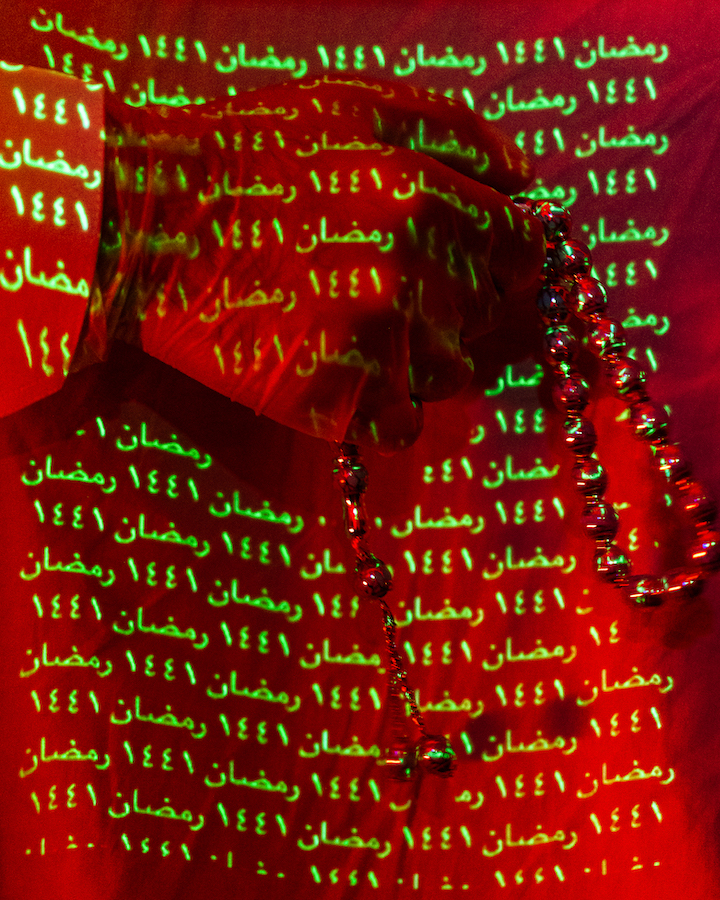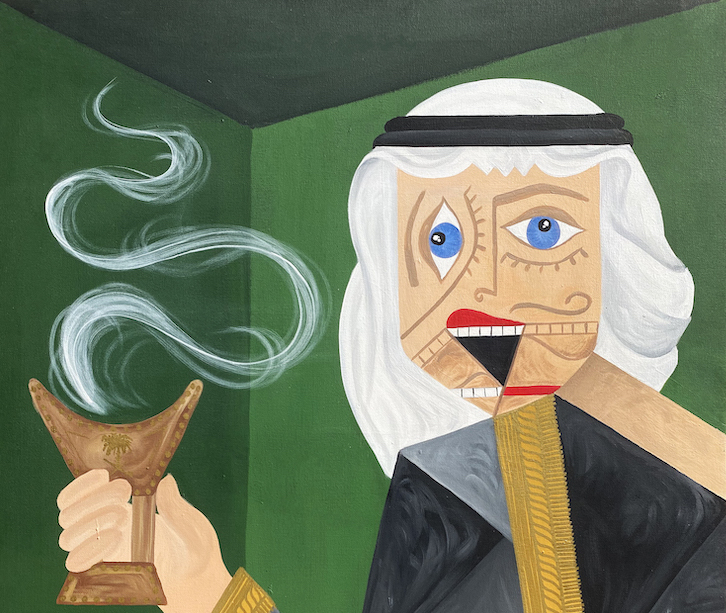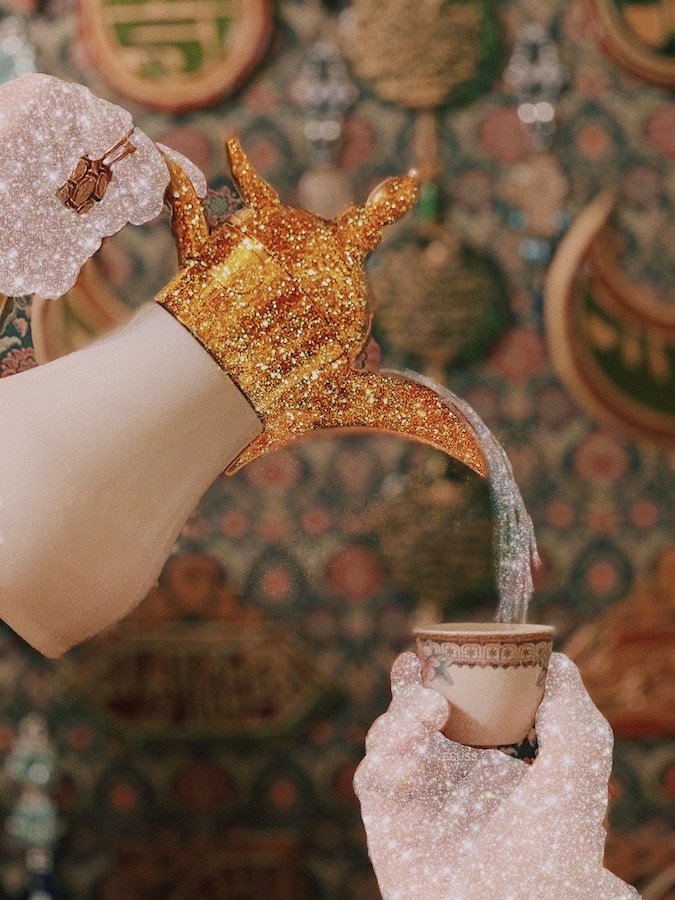BENGALURU: In Omani artist Mahmood Al-Zadjali’s latest artwork “More Precious Than Gold,” he photographs a woman eating a samboosa. Viewers may overlook the mundane act of eating and choose instead to focus on the aesthetic of the woman being photographed.
“During Ramadan, food turns into an obsession. Refraining from it during the day turns it into a desire,” writes Al-Zadjali on his Instagram account. He goes on to explain that, since people rarely make traditional Ramadan fare like luqaimat and samboosa through the rest of the year, come the holy month these delicacies are regarded as “more precious than gold.”

Al-Zadjali’s tongue-in-cheek photograph was part of last year’s online art exhibition “Ramadan in Quarantine,” hosted by the Khaleeji Art Museum (KAM), the region’s first digital art museum dedicated to showcasing the work of emerging artists in the region.
Since its launch on International Museum Day last year, KAM has held three online group exhibitions — “Khaleejis In The Time of Corona,” “Ramadan in Quarantine,” and “Art for Change” — and hosted two solo digital shows.
KAM’s founders, Emirati sisters Manar and Sharifah Al-Hinai, are also the team behind Sekka Magazine, an online arts and culture magazine launched in 2017, aimed at regional youth.
“Through Sekka, we get to meet a lot of emerging artists from the region,” Sharifah tells Arab News. “The art world is difficult to tap into — even more so when you are an emerging artist. The artists we worked with told us that the biggest challenge they face is that they cannot find spaces that will exhibit their work. So Manar and I had a conversation about this and we thought, ‘Why not start a digital art initiative?’ During a pandemic, digital is a great way to reach as many people as possible.”

After several conversations, the duo settled on the idea of a digital museum dedicated to artists from the Arab Gulf states. “As far as we knew, it was something that didn’t exist,” says Manar. “We are very proud to be the first digital museum that provides this platform.” The sisters are currently in talks with various organizations in the UAE to host physical exhibitions in the future.
Their first exhibition, “Khaleejis In The Time of Corona,” received a positive response. “With lockdowns all over the world and the situation still new, people were interested in seeing how others were coping with COVID-19,” Manar says. The online gallery hit over 10,000 views.
Their latest installation — “Ramadan amid COVID-19,” which began April 12 — sees seven artworks from six emerging regional artists displayed on the façade of the 36-story Intercontinental Hotel in Dubai Festival City (DFC). The show runs until April 26 with four ‘screenings’ every evening.

The works include Bahraini photographer Ishaq Madan’s “Ramadan 1441.” His photograph features a gloved hand holding prayer beads. The idea came to Madan during the height of the pandemic last year. “Ramadan usually witnesses triple the worshippers, but as the world shifted away from normalcy, the connection, for some, (was) difficult to find,” he explains. “As mosques closed their gates to worshippers, a new spiritual battle began — of finding connection with the heavens above. As some may struggle, it is important we strengthen our spiritual connections.”
Madan created a painting-like effect for his image by combining natural light techniques with unusual perspectives — portraying a subtle visual story through characters captured in the frame.

Omani artist Mays Almoosawi’s “Ramadan, the blessed month of peace and goodwill” is a digitally sketched illustration of an Arab woman reclining on a crescent moon — a longstanding symbol of Ramadan. Almoosawi includes further symbolism such as a coffee cup, and a traditional Arab kaftan.
“The illustration speaks of the COVID-19 situation in Ramadan,” she says. “Most of us (usually) spend the holy month gathering with family and friends. But this year, we are patiently waiting for life to get back to the way it was.”
Almoosawi’s work often features female figures in various shapes and forms. It represents the society that she grew up in, she says. “As an Arab girl, I was always surrounded by women. Hearing their stories and their insecurities had a big impact on me.”

Bahraini artist Essa Hujeiry combines photography and digital work. His artwork features a gloved, glittering hand pouring coffee out of a sparkling pot into a cup held by another’s hand. “(Coffee), in the Arab tradition, unifies people and brings them together,” Hujeiry says. “It is a constant in our lives and also a cultural symbol that embodies the idea of hospitality, unity, and safety in families during the holy month of Ramadan.”
Hujeiry has always been inspired by the cosmos, space, and illusion, he explains. His work is reflective of this, with several elements of glitter and spatial effects interspersed with cultural symbols. The rest of this series, he says, shows how we can be unified as a society even though we are facing a global pandemic that isolates us.
COVID-19 may have changed the way people celebrate Ramadan, but Hujeiry hopes that it won’t change the meaning behind the celebration. “We will still celebrate it with our loved ones, but keeping safety precautions in mind,” he says.


